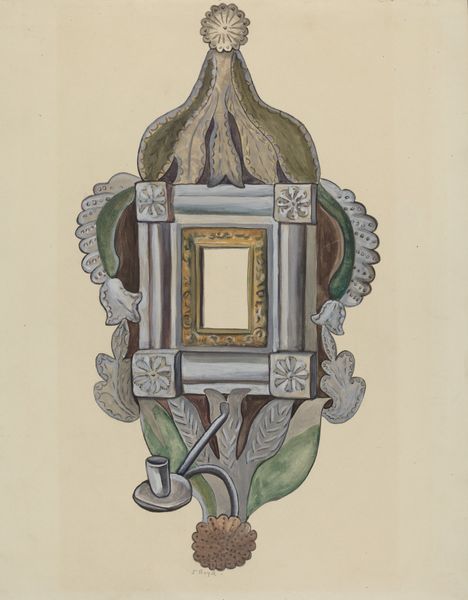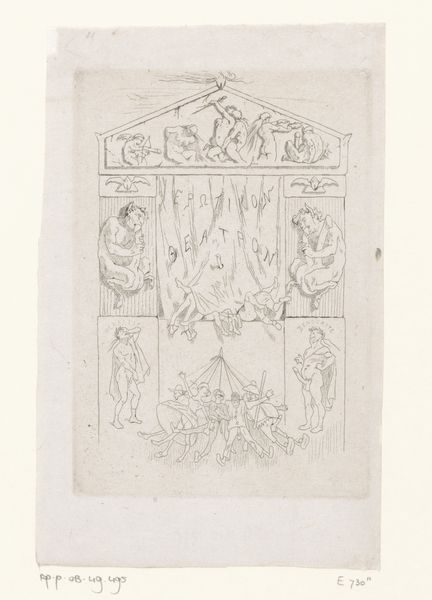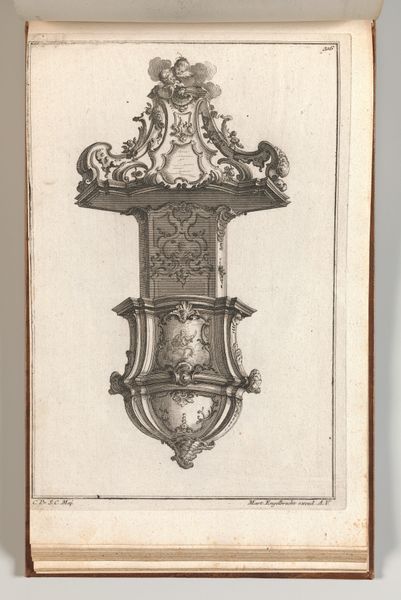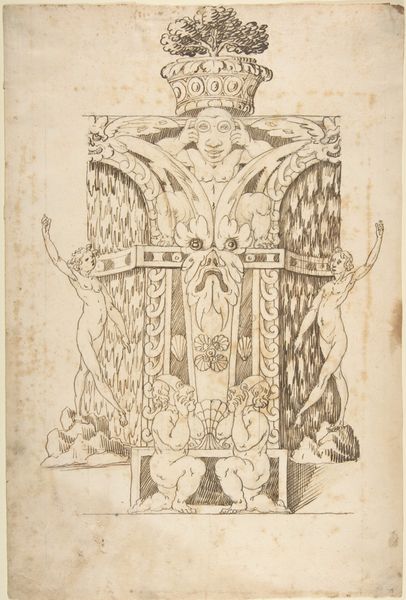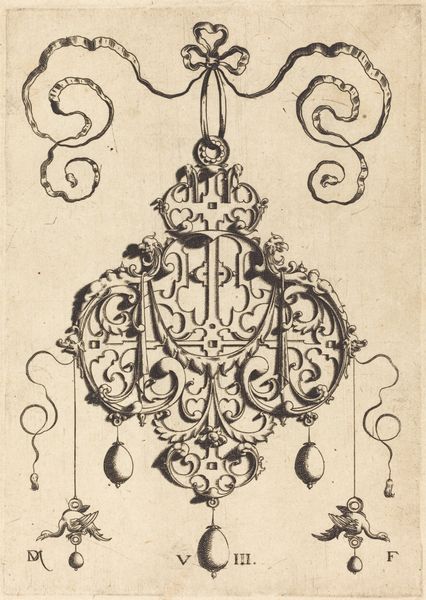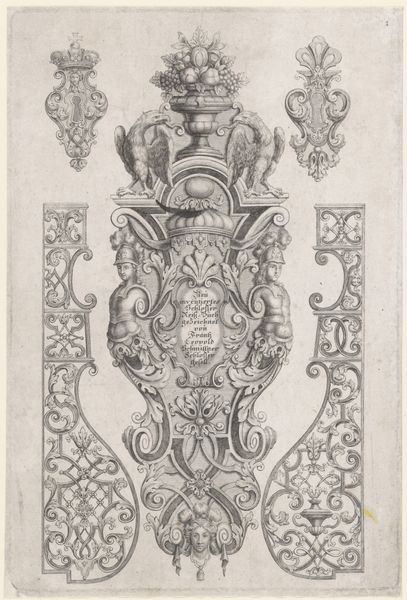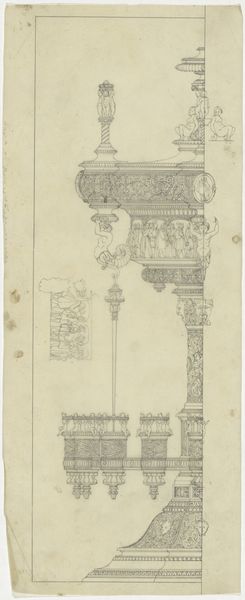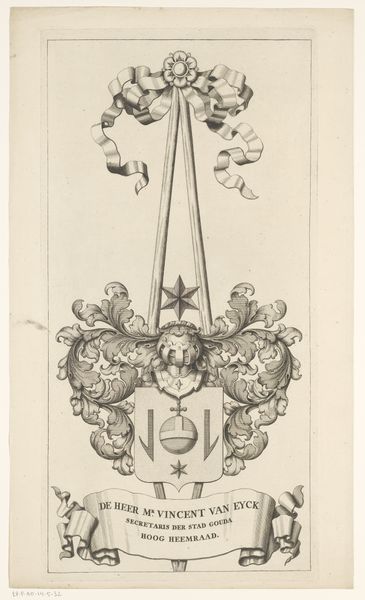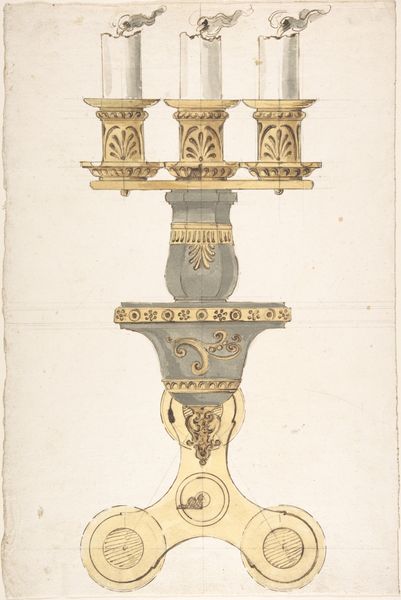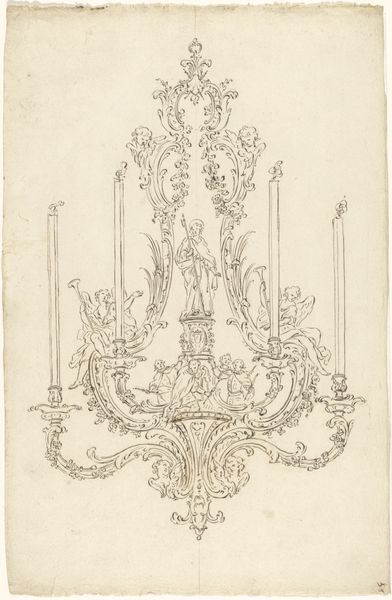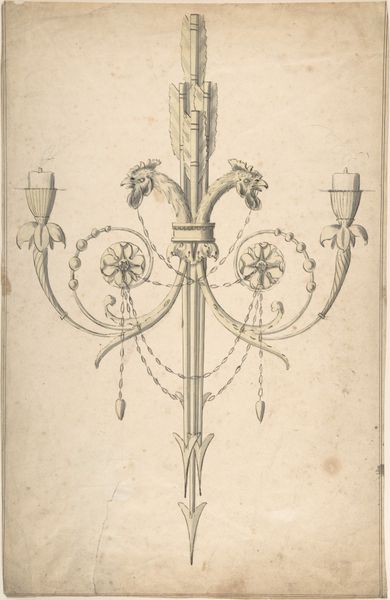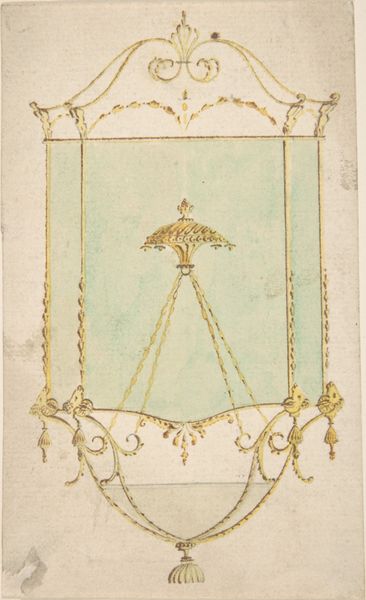
drawing, watercolor
#
drawing
#
water colours
#
landscape
#
watercolor
#
watercolour illustration
#
genre-painting
#
academic-art
#
watercolor
Dimensions: overall: 74.9 x 50 cm (29 1/2 x 19 11/16 in.) Original IAD Object: 27 1/4" wide; 63 1/4" high
Copyright: National Gallery of Art: CC0 1.0
Curator: So, here we have Alfred Parys's "Tavern Sign," believed to have been created between 1935 and 1942. It's a watercolor and drawing piece. What's your first impression? Editor: Well, it feels incredibly wistful. The muted tones, the delicate lines—it evokes this quiet sense of nostalgia, like a memory half-faded but fondly held. And a little unsteady! Curator: Nostalgia, definitely. Tavern signs were ubiquitous, markers of social life. The sign literally gave license—visual and social—for gatherings and, often, political discourse. Think of the tavern as the early internet. Editor: Hmm, the early internet, that is probably an upgrade from their real purpose which mostly featured bad ale and loose company. It is curious because this rendition doesn't sell a dream; instead, the sign is pale. And what is behind that crest? Pale, sickly green, instead of bright and shiny. Is the artist trying to make a comment? Curator: The context of its creation, pre-and-during World War II, is critical. Academic art and genre paintings persisted but shifted, becoming carriers of coded messages reflecting on national identity amid social and political uncertainty. Editor: So it's not just a sign pointing to beer, but perhaps a deeper commentary? I find it beautiful because, far from advertising mirth, it actually invites you to step into a world seen with melancholy, like a secret invitation into quietness. It also feels incredibly delicate. Fragile. Like it needs some ale. Curator: Absolutely. The choice of watercolor further underscores the delicate, almost ephemeral quality. Watercolor wasn't as valued as oils within the academy, perhaps Parys’ point about a changing of the guard within society, reflected in his tavern? Editor: Perhaps so. I just want to raise a glass to quiet corners and whispers of history—or simply to the ghosts in the tavern, whatever they are selling. Curator: Cheers to that. It is those quiet whispers, those untold stories behind everyday objects, that often tell us the most about a society's heart.
Comments
No comments
Be the first to comment and join the conversation on the ultimate creative platform.
